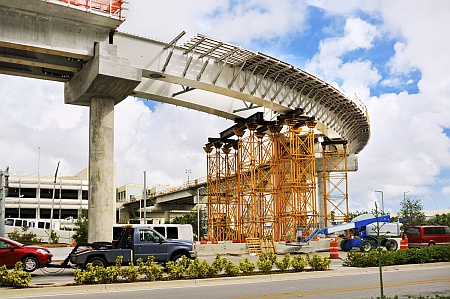Administration wants infrastructure investment
While Congress appears headed for another stopgap funding measure for transportation, the Obama administration is pushing the Build America Investment Initiative (BAII), which would make it easier for private entities to assist state transportation agencies and local governments in the task of rebuilding the nation’s infrastructure.
“The Build America Investment Initiative is a federal government-wide initiative to increase infrastructure investment and economic growth by engaging with state and local governments and private sector investors to encourage collaboration, expand the market for public-private partnerships and put federal credit programs to greater use,” said a statement released by the White House. “Starting with the transportation sector, this initiative will harness the potential of private capital to complement government funding.”
The approach includes three separate but related elements. First, the initiative includes the creation of the Build America Transportation Investment Center (BATIC) within the U.S. Department of Transportation, which will serve as a “one-stop shop” for state DOTs, local governments, and public and private developers and/or investors looking to use an innovative financing strategy for transportation projects.
This center will provide the following:
- ‘Navigator Service’ for the Public and Private Sector: Through hands-on support, advice and expertise, the center will make DOT credit programs more understandable and accessible to states and local governments and leverage both public and private funding to support ambitious projects. The center will also provide private sector developers and infrastructure investors with tools and resources to identify and execute successful PPPs.
- Improved Access to DOT Credit Programs: The center will encourage awareness and efficient use of existing resources at the Department, including the Transportation Infrastructure Finance and Innovation Act (TIFIA) program. TIFIA provides long-term, flexible financing to highway and transit projects that feature dedicated revenue sources. Each dollar of Federal TIFIA funding can support about $10 in loans, loan guarantees or lines of credit. In many cases, the lower cost of capital and flexible terms offered by TIFIA are critical factors in determining whether a PPP is a viable and cost-effective option for a project. The center will also focus on the use of key DOT programs including the Private Activity Bond program (PABs), and the Railroad Rehabilitation and Improvement Financing Program (RRIF).
- Technical Assistance: The center will share best practices from states that are leading the way on private investment to states that have not yet adopted innovative financing strategies, encouraging a more robust national market. Today, the top six states for PPPs have nearly two-thirds the value of all U.S. PPP projects. Twenty states have no PPPs in transportation at all. The center will provide technical assistance to help remove barriers to ensure the public and private sector can come together to complete projects that make sense. Through a website and on-demand technical assistance, the center will provide information about DOT credit programs, case studies of successful projects and examples of deal structures, standard operating procedures for PPP projects and analytical toolkits. It will also help interested investors better understand how DOT credit and grant programs can be used together to support project development.
- Information to Reduce Uncertainty and Delays: The center will work in partnership with the interagency Infrastructure Permitting Improvement center to provide visibility for local and state governments, project sponsors and investors on the permitting process.
Secondly, the initiative creates the Build America Interagency Working Group, co-chaired by USDOT Secretary Anthony Foxx and U.S. Treasury Secretary Jack Lew and consisting of “the best and brightest from the public and private sector,” which will address any barriers to private investments and partnerships in an effort to ease them.
Finally, the initiative includes the creation of the Infrastructure Investment Summit, hosted by the Treasury Department on Sept. 9, in order to bring together project developers and investors with state and local officials (and federal partners) to focus on “innovative financing approaches to infrastructure and highlight other resources that support project development.”
“The President will continue to use all tools at the administration’s disposal to protect our nation’s long-term economic security where we can,” said Foxx. “There is no question that America’s transportation infrastructure is one area where we have both the need and the opportunity to make a significant and lasting impact.”






